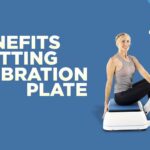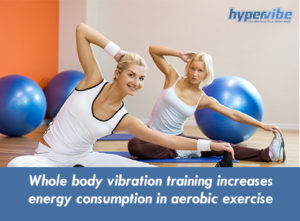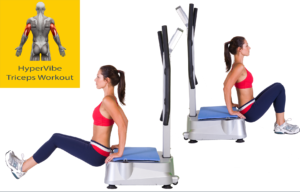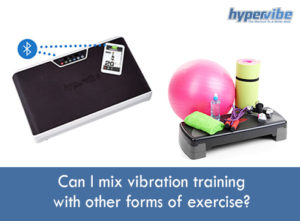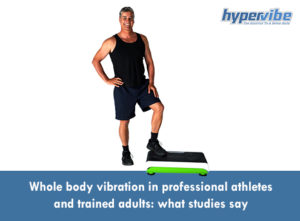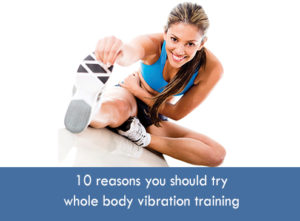Vibration training for athletes: good idea or too much?
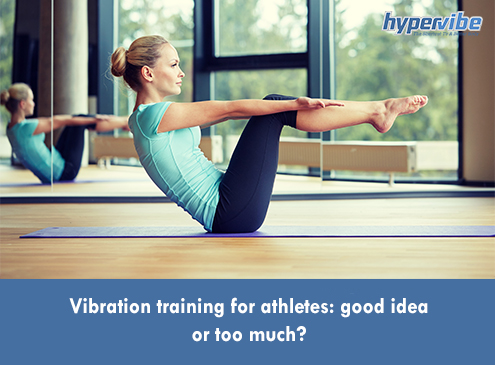
The risk of overtraining is higher in professional athletes and fitness enthusiasts who spend weeks and even months without taking any break to from workouts, to allow their body and nervous system to recover completely. To avoid workout burnout, you can either take more frequent breaks from your routine and try not to feel guilty for doing so, or train smarter and maximize your workouts by alternating the types of exercise you perform on a daily basis.
Adding whole body vibration to your routine may seem too much, because this type of exercise can be very intense, but studies have showed that vibration training provides significant benefits to recreational and professional athletes, so we’ll take a look at some research papers to see why it’s a good idea to train on a vibrating plate if you’re an athlete.
But before digging deeper into research, here are some signs that you might be overtraining:
- your resting heart rate is higher than normal, and your metabolic rate is also elevated, because your body tries to meet the demands of the workout
- you’re constantly thirsty, because your body is in a catabolic state and this causes dehydration
- your muscles are sore for more than 72 hours post workout, and you no longer see gains, because the fibers don’t recover efficiently
- your sleep schedule is altered and you often have difficulty sleeping, because your nervous and hormonal systems are probably overwhelmed
- exercising no longer feels great, it’s a form of stress for your body and mind, but skipping a workout makes you feel guilty
- your immune system is weaker and you get sick more often, because the continuous catabolic state lowers immunity
- your appetite is higher than it used to be and despite training daily, you seem to gain fat instead of getting rid of it
- you crave sweets and carbs, because your body burns a lot of calories during the workout and it needs to refill its energy reserves
Guilty of these? Then it’s time to take a break from your standard workouts and make your workouts shorter and less frequent but more effective, until you feel that your body has recovered and you can return to your regular training schedule.
What whole body vibration can do for athletes
First thing first, in WBV, as in any other form of workout, preventing injury is a top priority, so if you’re overtraining and want to switch to whole body vibration to shorten your workouts, make sure you actually give your body the chance to recover between sessions. We do not encourage overtraining, so if you feel exhausted and your muscles are always sore, we recommend to take a break from workouts until you recover.
If you just want an alternative to long and demanding workouts, limit the exercises to 10 minutes per session and adjust the intensity to a level that feels comfortable. Avoid positions that favor head vibration, such as lying or sitting on the plate, or reduce the intensity and frequency when training the upper body and core.
Vibration training increases strength, power and flexibility in trained and untrained athletes. As shown by Bosco, WBV can increase forearm flexors power by increasing neural efficiency, and can lead to a significant increase in velocity, power and force in the lower body of volleyball players. Issurin showed that whole body vibration can increase biceps strength in amateur athletes, and Cardinale found that squatting at 30Hz on a whole body vibration machine engages the muscles and produces the greatest response from the muscle fibers at frequencies around 30Hz.
Cochrane investigated the effects of WBV on flexibility, vertical jump performance and grip strength in elite athletes, and found that standing on a vibration platform can lead to an increase in the first two mentioned parameters. Also, Kinser investigated the effects of vibration training on explosive strength and flexibility in female gymnasts and found that mixing WBV with stretching exercises increases flexibility but doesn’t have any significant effect on explosive strength.
In another study, published in PLoS ONE, German researchers showed that vibration exercises can provide supplementary benefits in young, well-trained adults compared to training programs that do not include whole body vibration exercises. The study investigated the effects of WBV on balance and muscle endurance of the lower leg, and involved 38 participants who were assigned to either the vibration or control group.
The vibration group received 2 sets of WBV, the duration of the first set being 3 minutes in the first week, 5 minutes in the second week and 8 minutes in the last two weeks of the experiment. The second set lasted until exhaustion, but was limited to 20 minutes. A 3-min rest period was intercalated between the 2 sets. Frequency of vibration was set to 25 Hz, and amplitude to 4 mm, the WBV machine used being a pivotal one.
To sum it up, there’s enough evidence that athletes can experience significant benefits from vibration training, especially improvements in strength, flexibility and power, so if you feel your workouts are no longer efficient and they take too much time, we encourage you to give WBV a try.
Want to add something to this article? Comment below, or join our Facebook community and share your thoughts with us there!





